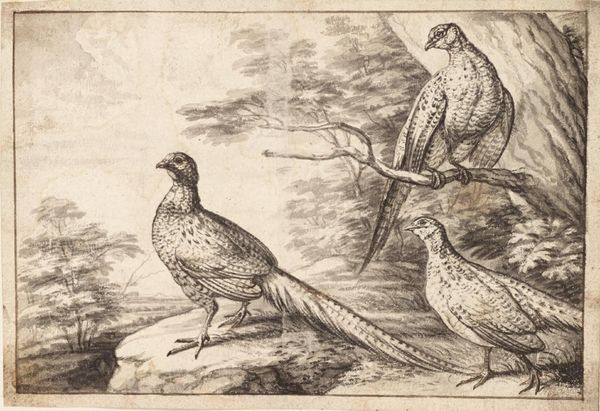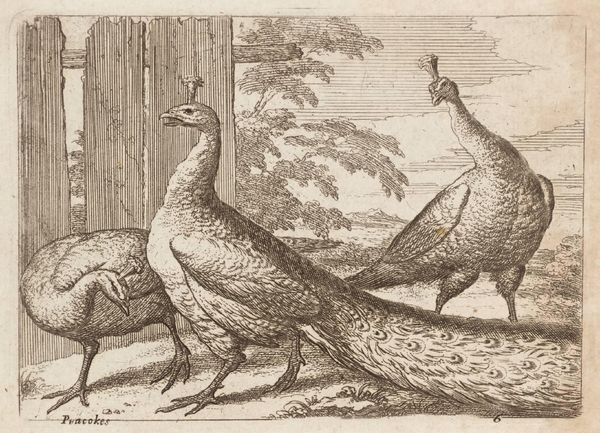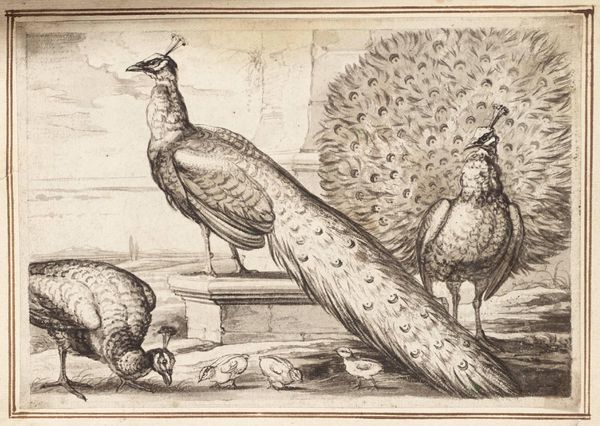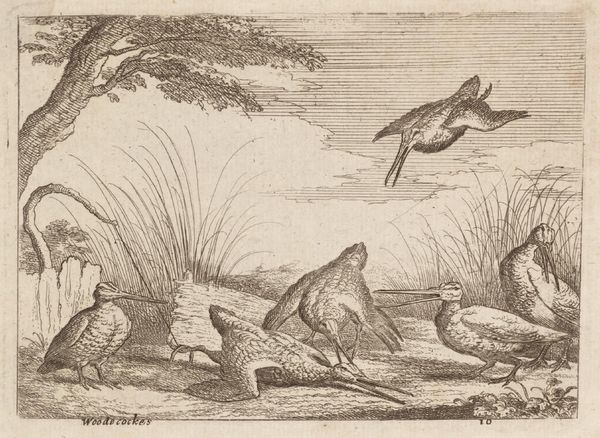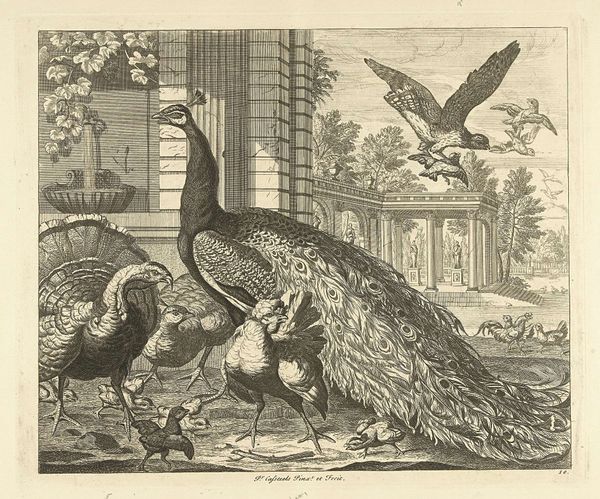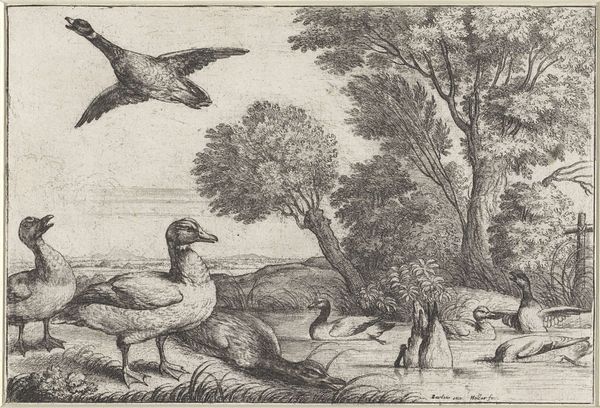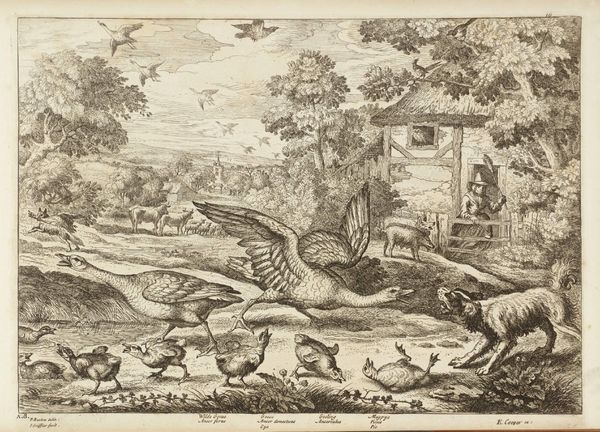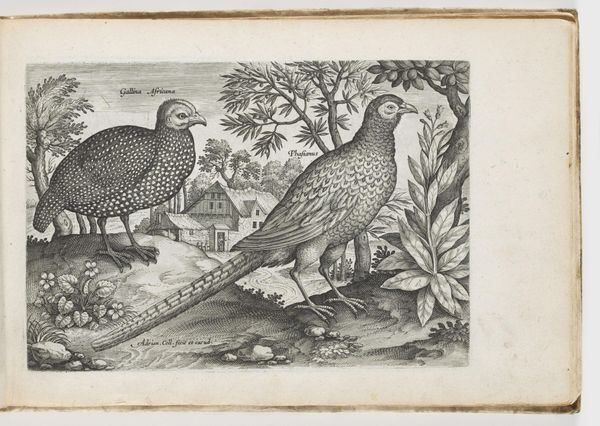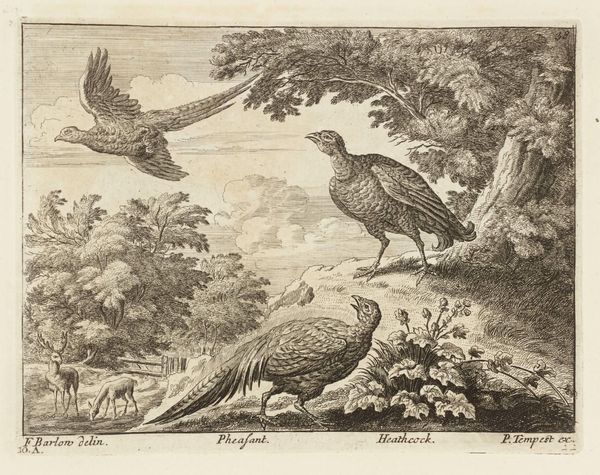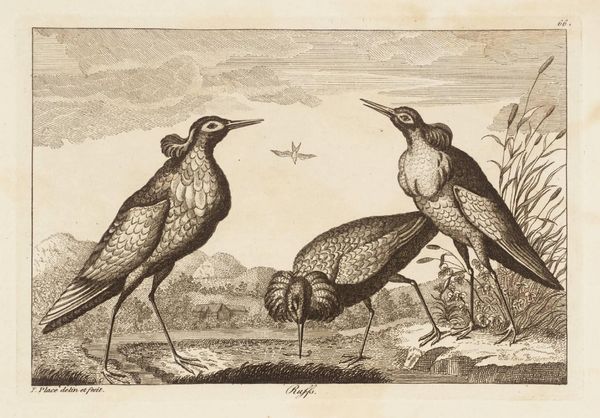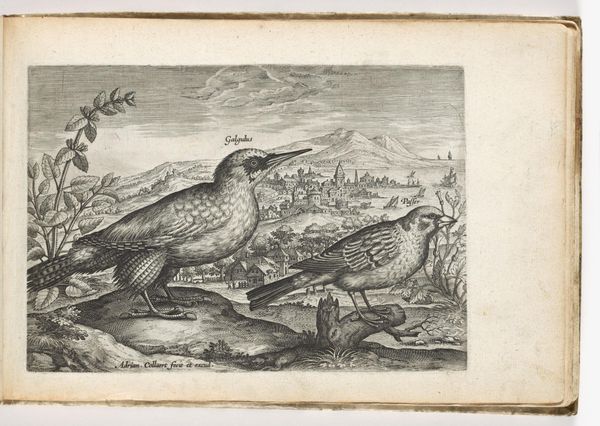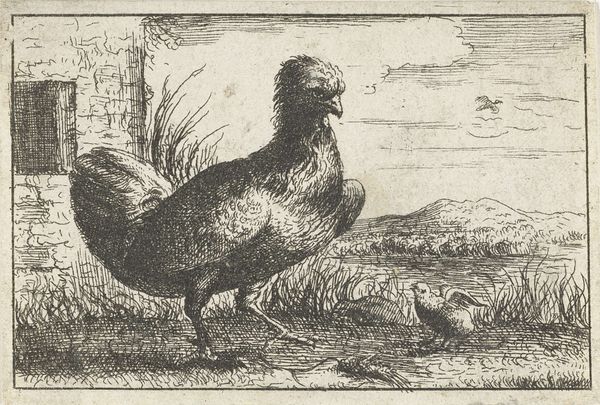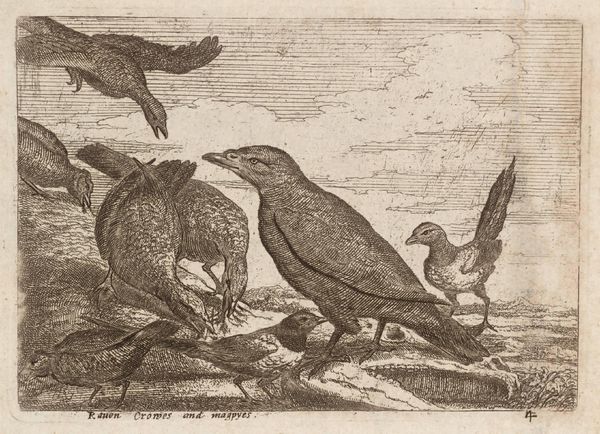
drawing, print, etching, engraving
#
drawing
#
animal
# print
#
etching
#
landscape
#
bird
#
figuration
#
genre-painting
#
engraving
Dimensions: height 135 mm, width 194 mm
Copyright: Rijks Museum: Open Domain
Curator: This is an etching entitled "Vier vogels," or "Four Birds," made sometime between 1654 and 1712, by an anonymous artist. It is currently held in the Rijksmuseum. Editor: My first impression is that it’s a very elegant composition in monochrome, with an intriguing use of light and shadow. The textures created through the etching technique are quite remarkable. Curator: It's fascinating how this image, at first glance simply depicting birds, might engage with colonial narratives. Think about how European naturalists and artists catalogued flora and fauna in newly 'discovered' lands. This image could participate in that scientific project of observation, categorization, and ultimately, control. Editor: I see what you mean. However, the artist's focus on detail and texture leads me to contemplate the semiotic weight of each stroke. Note the bird perched above, the diagonal branch directing our gaze; it's meticulously balanced with the composition. The varying line weights beautifully depict form. Curator: And these forms reflect complex societal power dynamics, gender roles, and maybe even imperial expansion through scientific rationalization. One wonders about the role of women in science in the 17th and 18th centuries, or the place of indigenous knowledge production systems. Editor: Certainly, there are those dimensions. From a structuralist standpoint, though, consider the binary oppositions within the work. The birds themselves embody distinctions: predator/prey, active/passive, earth/sky. This contrasting set invites close consideration of natural relationships and artistic representation. Curator: Placing it within a postcolonial frame lets us challenge conventional perspectives about art's relationship to empire and center voices that have been historically silenced. Editor: Precisely, which provides a useful vantage point, just as dissecting formal properties allows a unique angle of reflection. Thank you for offering new lenses to better understand the piece. Curator: The dialogue and engagement, especially those interrogating established art historical methods, is where the true understanding unfolds.
Comments
No comments
Be the first to comment and join the conversation on the ultimate creative platform.
